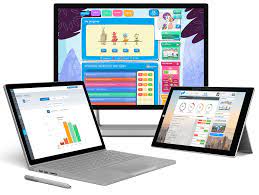In the era of remote learning and online teaching, having a high-quality microphone can make a significant impact on the communication between teachers and students. As an educator, you want to ensure that your voice is crisp and clear, allowing your students to focus on the content you are teaching. To help you in your quest for an excellent online teaching experience, we have compiled a list of the 8 best microphones for online teaching.
1. Blue Yeti USB Microphone
The Blue Yeti is one of the most popular microphones among online teachers and content creators, thanks to its exceptional sound quality, ease of use, and versatility. This USB microphone provides four recording patterns (cardioid, stereo, omnidirectional, and bidirectional), allowing you to tailor the audio settings according to your needs.
2. Audio-Technica AT2020USB+
Another great choice for online teaching is the Audio-Technica AT2020USB+. This condenser microphone offers excellent audio quality with its cardioid polar pattern, which picks up sound from the front while minimizing background noise. The AT2020USB+ also comes with a built-in headphone jack for real-time monitoring of your audio.
3. Rode NT-USB
The Rode NT-USB is a high-quality microphone that boasts a clear and natural sound profile perfect for online teaching. It features a built-in pop filter to minimize plosive sounds and includes a detachable stand for easy setup on your desk or workspace.
4. Samson Meteor Mic USB Studio Microphone
The Samson Meteor Mic is an affordable option without sacrificing audio quality. This compact microphone has a cardioid pickup pattern, making it ideal for single-person recordings like online classes or meetings.
5. Shure MV5 Digital Condenser Microphone
The Shure MV5 is another budget-friendly option with impressive sound quality. It offers three preset recording modes (voice, instrument, and flat), making it versatile and suitable for various online teaching scenarios.
6. JLab Audio Talk Go USB Microphone
The JLab Audio Talk Go is a compact and budget-friendly microphone that still delivers excellent audio quality. It features two directional recording patterns (cardioid and omnidirectional) and a quick-mute button for added convenience during live classes or recordings.
7. Fifine K669B USB Condenser Microphone
The Fifine K669B is another affordable choice with great performance. This simple plug-and-play microphone features a cardioid polar pattern, guaranteeing clear audio with minimal background noise interference.
8. Maono AU-A04 Condenser Studio Microphone
Last on our list is the Maono AU-A04, an all-in-one studio microphone kit perfect for online educators. This bundle includes a condenser microphone, adjustable arm stand, pop filter, foam windscreen, and more – providing you with everything you need for professional-sounding voice recordings during your online teaching sessions.
In conclusion, investing in an excellent microphone not only enhances the quality of your online lectures but also ensures a smoother learning experience for your students. Whether you’re on a tight budget or looking for something more premium, this list provides various options to cater to your specific requirements. Choose the microphone that aligns with your needs and elevate your teaching game in the world of remote education.











